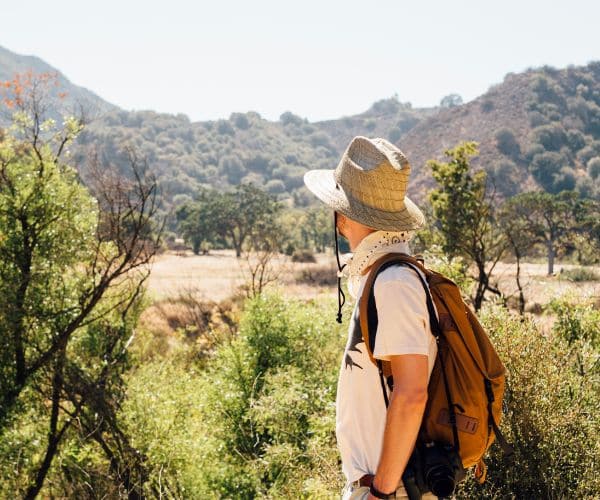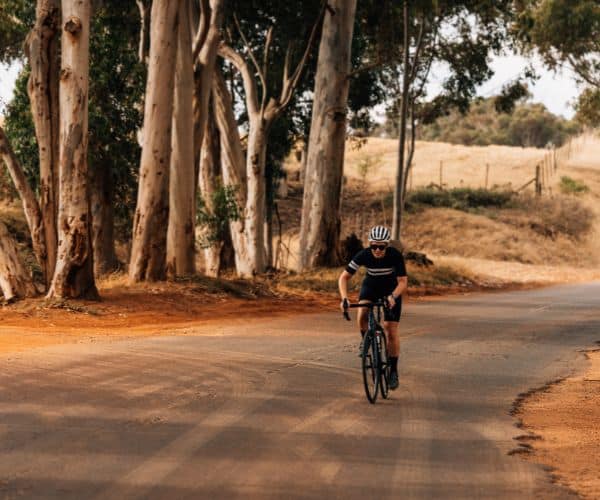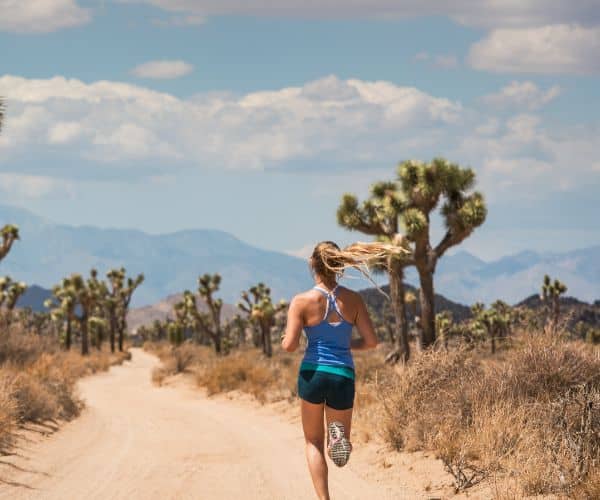There’s a unique breed of adventurer who doesn’t just seek out mountains, rivers, or jungles – they chase the heat. For these individuals, it’s not enough to climb or paddle. They crave the furnace of the Earth’s most punishing places: the blistering dunes of the Sahara, the cracked salt flats of the Atacama or the sweltering canyons of Death Valley. These environments aren’t just hot—they’re relentless, testing the limits of human endurance.
Facing extreme heat is more than just sweating it out. It’s a full-body challenge that affects your core temperature, hydration levels, mental sharpness, and physical coordination. The mental and physical toll can be staggering. Success in such environments isn’t accidental, it requires training, acclimatisation, and the right mindset. This isn’t territory for casual holidaymakers. It’s for experienced athletes or those willing to put in the hard graft to be ready.
In this blog, we’ll highlight some of the world’s hottest sporting challenges and adventure destinations, from ultra-marathons across sun-scorched deserts to high-altitude treks in arid terrain. We’ll look at the types of activities that can be done in extreme heat, how your body responds to high temperatures, and what you must do to prepare safely and responsibly. If you’re serious about taking on nature’s most fiery playgrounds, this guide will help you start on the right (sweaty) foot.
The world’s hottest adventure destinations

Morocco – Marathon des Sables
Perhaps the most famous extreme heat endurance event, the Marathon des Sables is a six-day ultramarathon across the Sahara Desert. Participants run over 250km in temperatures that routinely hit 50°C. This is not just a race—it’s a survival experience. Legendary adventurer Sir Ranulph Fiennes took on this brutal challenge, completing it at the age of 71. He called it the toughest thing he’d ever done, and considering his previous polar exploits, that’s saying something.
United Arab Emirates – The Empty Quarter
The Rub’ al Khali, or Empty Quarter, is one of the largest sand deserts in the world. Stretching across the UAE, Oman, Saudi Arabia and Yemen, it offers thrilling 4×4 desert safaris, camel trekking, and even long-distance running events. With scorching temperatures well over 45°C, the environment is both beautiful and unforgiving.
Australia – Trekking the Outback
The Australian Outback is a vast, arid expanse ideal for seasoned trekkers. Whether exploring the Simpson Desert or taking on the iconic Larapinta Trail, the key challenge here is the heat. Summer temperatures often rise above 45°C, and the isolation adds another layer of intensity. Adequate water supplies and navigation skills are essential.
USA – Death Valley
Home to the hottest recorded air temperature on Earth (56.7°C), Death Valley is not for the faint of heart. It’s a magnet for hikers, cyclists, and the elite athletes of the Badwater Ultramarathon. The arid landscape is strikingly beautiful, but one wrong step in such heat can be dangerous.
Chile – The Atacama Desert
Known as the driest non-polar desert on Earth, the Atacama is a surreal, Martian-like environment. Adventurers can go sandboarding in Valle de la Muerte or stargazing under some of the clearest skies on the planet. While temperatures are slightly lower than some of the others on this list, the dryness intensifies the challenge.
Types of activities in extreme heat
The sort of activities attracting heat-seekers vary, but these are the most popular:
Endurance Sports: Marathons, ultramarathons, and long-distance cycling events.
Trekking & Hiking: Exploring vast desert trails or high-altitude plateaus.
Off-road & Exploration: 4×4 desert expeditions, dune bashing, or camel safaris.
Cultural Journeys: Engaging with communities that have adapted to life in intense heat for centuries.
Each requires different gear, pacing, and hydration strategies.
Techniques for different sports in high temperatures

Trekking
Start early or go late
The first and last light of the day offer the best window for trekking. You’ll avoid the worst of the heat and often enjoy more wildlife activity and cooler ground underfoot.
Trekking poles
These help reduce the strain on your legs, especially on loose or uneven terrain. They also encourage a consistent pace.
Seek shade
Use natural features like rocks or scrub for shade. Build rest into your plan to give your body time to cool.
Hydration strategy
Carry more water than you think you’ll need and use hydration bladders for easy access while walking.
Cycling
Insulated bottles
These help keep liquids cooler for longer in the heat. Consider carrying a spare bottle with an electrolyte mix.
Tyre pressure
Hot ground expands air inside your tyres. Lowering the pressure slightly can improve grip and reduce the chance of blowouts.
Protective clothing
Arm sleeves and lightweight, breathable layers protect you from the sun while still allowing heat to escape.
Route planning
Pick routes with some shade or water refill points and always let someone know your plan in case of emergency.
Running
Pace wisely
In high heat, speed comes second to sustainability. Run based on perceived effort, not your normal pace.
Cooling techniques
Wet towels, neck buffs soaked in cold water, and even stopping to dip your hat in a stream or bottle can all help lower body temperature.
Listen to your body
Any signs of heat stress, dizziness, chills despite the heat, or confusion, are signals to stop immediately and cool down.
Lightweight gear
Choose shoes with good ventilation and socks that wick away sweat to avoid blisters.
Understanding high temperatures

High heat isn’t just about the number on the thermometer. Factors like humidity, wind, and direct sun exposure all affect how heat impacts your body. Environments where shade is scarce and water is limited compound the difficulty. Your body must work overtime to cool itself, and when it can’t, things can go south fast.
Risks associated with extreme heat
Venturing into high heat zones isn’t just uncomfortable—it’s risky and knowing what you’re facing could help:
Heatstroke
This is a serious medical emergency where the body’s internal temperature rises to dangerous levels, usually above 40°C. Sweating may stop altogether, confusion sets in, and collapse can follow. Without prompt medical intervention, it can be fatal.
Dehydration
In extreme heat, the body loses fluids rapidly. Even a mild level of dehydration can impair your ability to think clearly and move efficiently. Severe dehydration can lead to fainting, organ failure, or worse.
Sunburn & Heat Rash
Unprotected skin burns quickly in direct sunlight, especially in dry, reflective environments like deserts. Heat rash, though less serious, can cause significant discomfort and lead to infections if untreated.
Disorientation
High temperatures impair cognitive function, reaction time, and decision-making. Getting lost or making poor judgement calls in a hot, hostile environment can escalate into life-threatening situations.
Headaches, Nausea, Dizziness
These are early warning signs that your body is struggling with the heat. They often precede more serious conditions like heat exhaustion and should never be ignored.
Protecting yourself in high temperatures

You can endure high heat, but only with preparation and the right protection, such as:
Clothing
Opt for light-coloured, breathable clothing that allows air flow. Loose-fitting garments help regulate body temperature and wick away sweat. A wide-brimmed hat shields your face and neck, while polarised sunglasses protect your eyes from harsh UV rays.
Hydration
Drink regularly, not just when you feel thirsty. Supplement water with electrolyte-rich drinks to prevent cramping and maintain muscle function. Avoid alcohol and caffeine, which accelerate dehydration.
Sunscreen
Choose a broad-spectrum SPF 50+ sunscreen. Reapply every two hours, or more frequently if you’re sweating heavily. Don’t forget vulnerable areas like ears, neck, and the back of your hands.
Pacing
Respect the midday sun. Slow down your activity between 11am and 3pm, take frequent breaks in shade if possible, and listen to your body. Overexertion in peak heat can lead to rapid heat illness.
Preparing for activities in extreme heat
Success in extreme heat starts long before you arrive, these are your foundations to prepare:
Train in the heat
Your body needs time to adapt. If you can’t train in naturally hot environments, simulate the effect with extra clothing or sauna sessions (under guidance). Acclimatisation improves your body’s ability to sweat efficiently and maintain core temperature.
Know the terrain
Study maps, GPS coordinates, and recent trip reports. Identify potential hazards, water sources, and emergency shelter spots. Print hard copies in case your tech fails.
Mental resilience
Mental resilience is what separates the prepared from the panicked. Visualise challenges, rehearse your responses to stress, and remember why you’re doing it.
Nutrition and hydration
Heat suppresses appetite, but your body still needs fuel. Choose salty, carbohydrate-rich snacks that are easy to digest. Drink steadily throughout the day to avoid peaks and troughs in hydration levels.
Additional considerations
Technology: GPS, satellite phones, and solar chargers can be lifesavers.
Environmental responsibility: Deserts are fragile. Stick to trails, carry out all waste, and avoid disturbing wildlife.
Insurance – Make sure your policy covers you for activities in extreme heat and if there are any caveats to be aware of.
Extreme heat adventures are not for everyone, but for those drawn to the edge of endurance, they offer unmatched challenges and rewards. The key is preparation, respect for the environment, and a solid understanding of your physical and mental limits.
So, are you ready to test yourself against the sun? Whether it’s across Saharan sands, the desolation of Death Valley, or the high-altitude salt flats of Chile, adventure awaits—but it doesn’t take prisoners.
Have you tackled an adventure in extreme heat? We’d love to hear your stories below.
Get Sports Travel Insurance from SportsCover Direct
When situations arise beyond your control, such as taking part in activities in extreme heat and you require services like search and rescue, medical care, or repatriation, it’s essential to have specialist sports travel insurance that covers the specific activities you’re undertaking.
SportsCover Direct covers over 500 sports and activities such as trekking insurance and ultra marathon running insurance and specialises in the extra cover you might need when doing something more specialist or extreme.
Our Sports Travel Insurance gives you worldwide cover and is designed to give financial protection for medical and repatriation costs, cancelled trips and more. You can also opt for a bolt-on, Activity Top-Up, to add to your existing policy for specialist activities.
Find out more and get a personalised quote online.
This blog has been created as general information and should not be taken as advice. Make sure you have the correct level of insurance for your requirements and always review policy documentation.